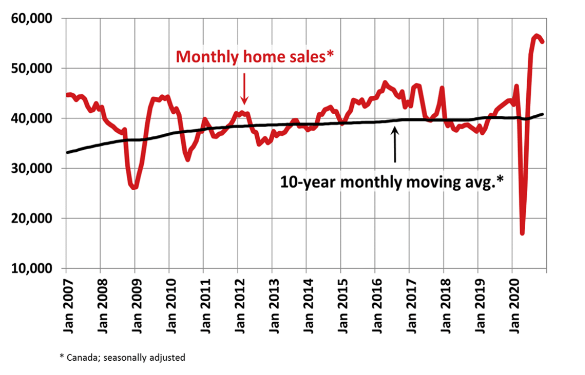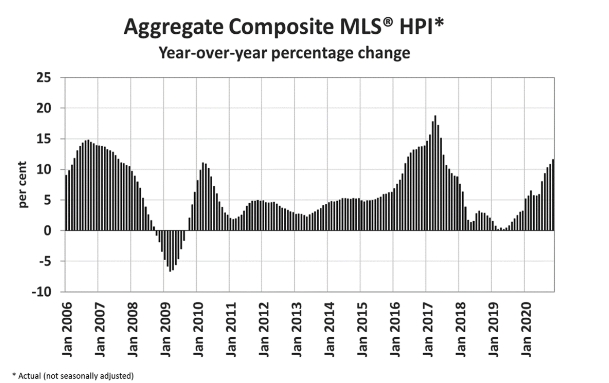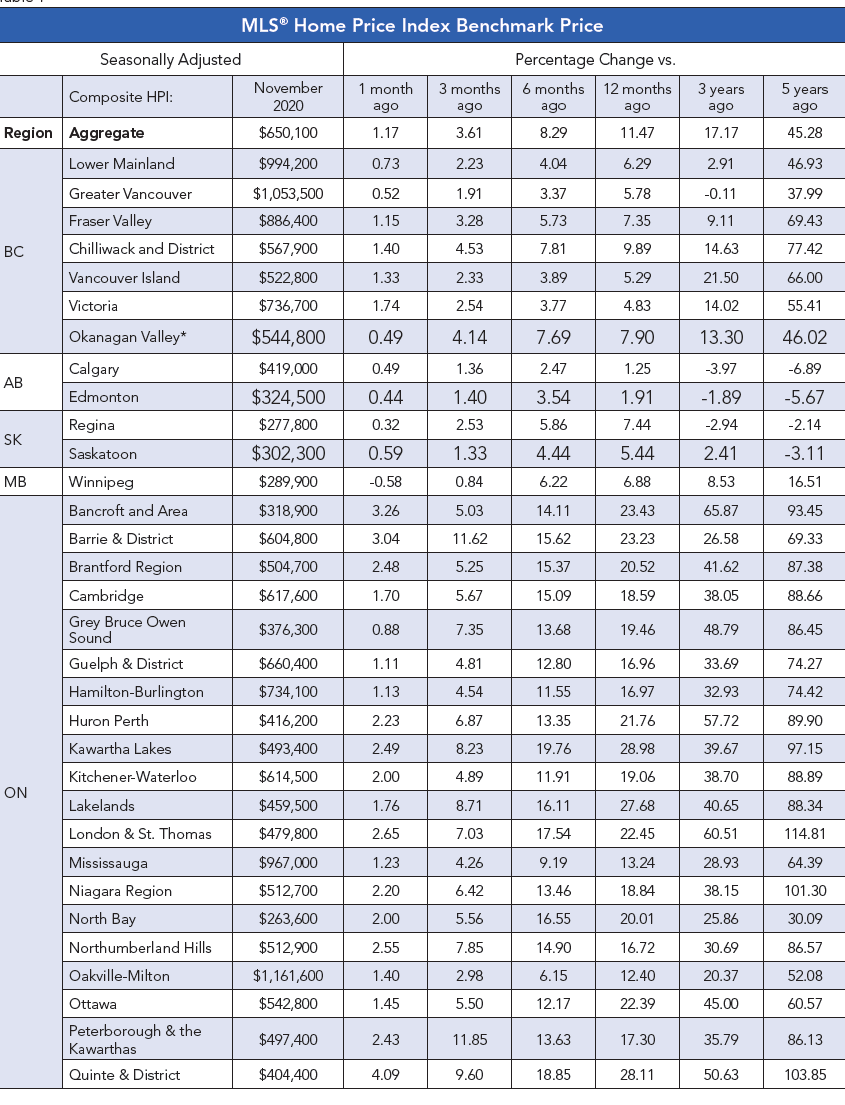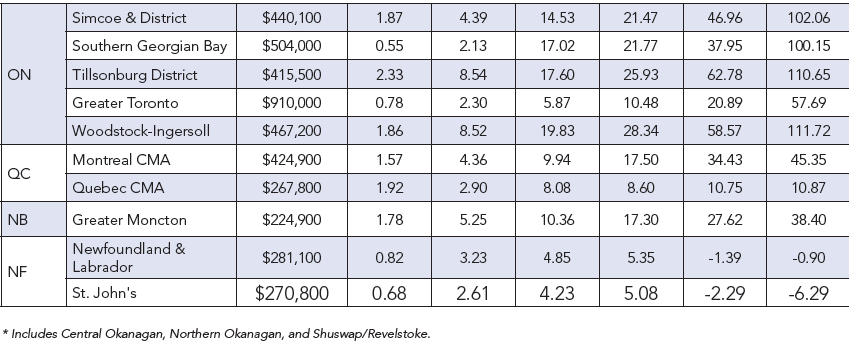Canadian Home Sales Hit a New Record For The Month of November
Canadian Housing Remained Strong in November

New Listings
The number of newly listed homes declined by 1.6% in November, led by fewer new listings in the Greater Toronto Area (GTA) and Ottawa.
With sales and new supply down by the same percentages in November, the national sales-to-new listings ratio was unchanged at 74.8% – still among the highest levels on record for the measure. The long-term average for the national sales-to-new listings ratio is 54.2%.
Based on a comparison of sales-to-new listings ratio with long-term averages, only about 30% of all local markets were in balanced market territory in November, measured as being within one standard deviation of their long-term average. The other 70% of markets were above long-term norms, in many cases well above.
There were just 2.4 months of inventory on a national basis at the end of November 2020 – the lowest reading on record for this measure. At the local market level, some 21 Ontario markets were under one month of inventory at the end of November.Home Prices
The Aggregate Composite MLS® Home Price Index (MLS® HPI) rose by 1.2% m-o-m in November 2020. Of the 40 markets now tracked by the index, all but one were up between October and November.
The non-seasonally adjusted Aggregate Composite MLS® HPI was up 11.6% on a y-o-y basis in November – the biggest gain since July 2017 (see chart below).
The table below shows the changing preferences of homebuyers for less densely populated areas outside the city core. With more people working from home, shorter commuting times don't seem to be as important as before.
The largest y-o-y gains – between 25- 30% – were recorded in Quinte & District, Tillsonburg District, Woodstock-Ingersoll, and many Ontario cottage country areas.
Y-o-y price increases in the 20-25% range were seen in Barrie, Bancroft and Area, Brantford, Huron Perth, London & St. Thomas, North Bay, Simcoe & District, Southern Georgian Bay and Ottawa.
Y-o-y price gains in the range of 15-20% were posted in Hamilton, Niagara, Guelph, Cambridge, Grey-Bruce Owen Sound, Kitchener-Waterloo, Northumberland Hills, Peterborough and the Kawarthas, Montreal and Greater Moncton.
Prices were up in the 10-15% range in the GTA, Oakville-Milton and Mississauga.
Meanwhile, y-o-y price gains were in the 5-10% range in Greater Vancouver, the Fraser Valley, Chilliwack, Victoria and elsewhere on Vancouver Island, the Okanagan Valley, Regina, Saskatoon, Winnipeg, Quebec City and St. John’s NL. Price gains also climbed to around 1-2% y-o-y in Calgary and Edmonton.
The MLS® HPI provides the best way to gauge price trends because averages are strongly distorted by changes in sales activity mix from one month to the next.
The actual (not seasonally adjusted) national average home price was just over $603,000 in November 2020, up 13.8% from the same month last year.
Bottom Line
Housing strength is largely attributable to record-low mortgage rates and strong demand for more spacious accommodation by households that have maintained their income level during the pandemic. The hardest-hit households are low-wage earners in the accommodation, food services, non-essential retail and tourism-related sectors. These are the folks that can least afford it and typically are not homeowners. The good news is that the housing market is contributing to the recovery in economic activity.
The level of sales is firm and holding up better than most pundits had expected. Despite the historic setback to the market earlier this year caused by the pandemic, CREA projects national sales will hit a record of 544,413 units in 2020, representing an 11.1% increase from 2019, and rise again next year by 7.2% to around 584,000 units.
This article was written by Dr Sherry Cooper, DLCs Chief Economist.







